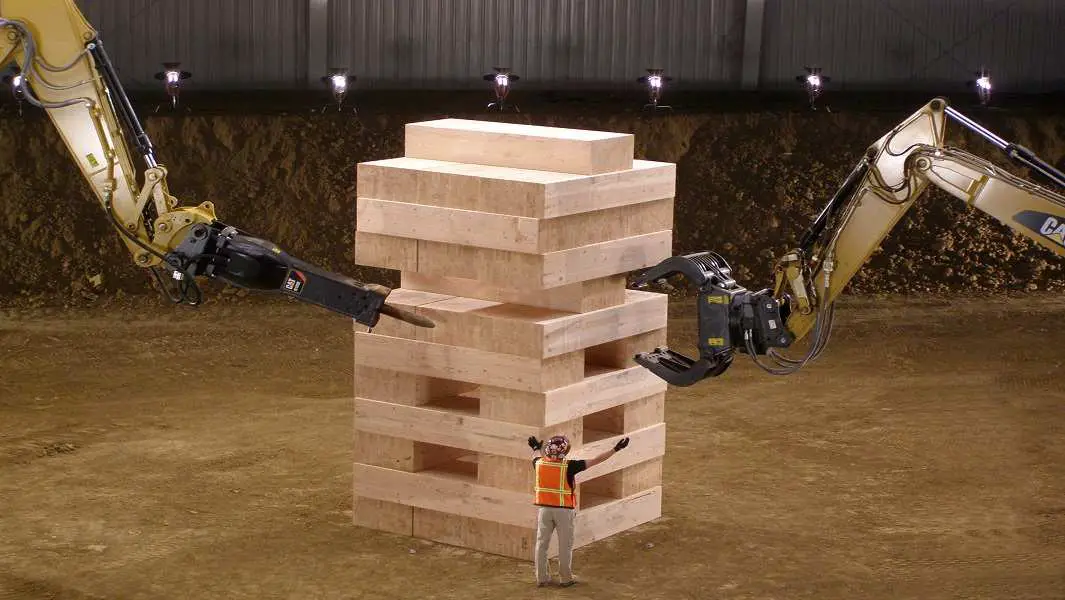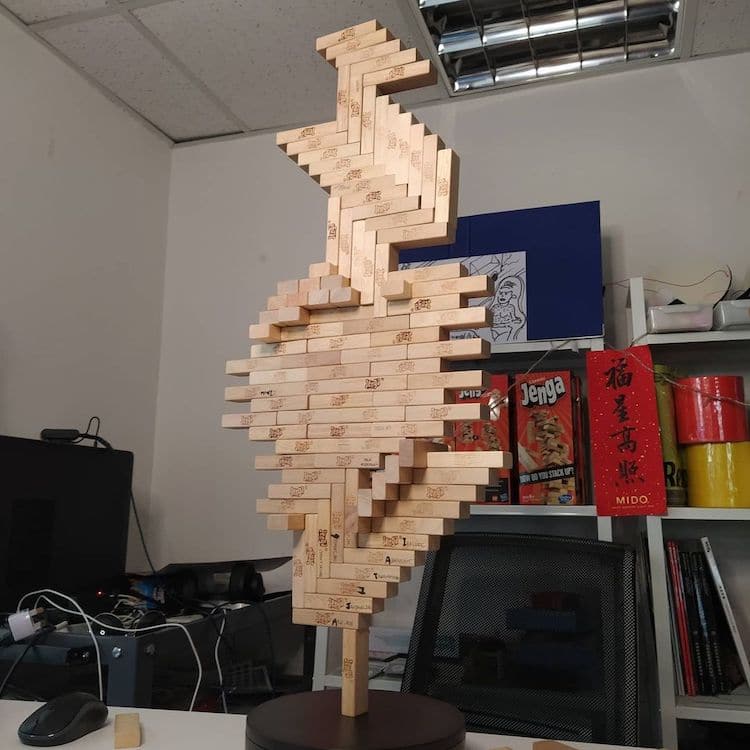
The V&A Museum of Childhood has exhibited one of the original sets of Jenga since 1982. The blocks of the first sets of Jenga were manufactured for Scott by the Camphill Village Trust in Botton, Yorkshire. Scott launched the game she named and trademarked as "Jenga" at the London Toy Fair in January 1983 and sold it through her own company, Leslie Scott Associates. A British national, Scott was born in Tanganyika, now Tanzania, where she was raised speaking English and Swahili, before moving to live in Ghana, West Africa. The name jenga is derived from kujenga, a Swahili word which means 'to build'. Jenga was created by Leslie Scott, the co-founder of Oxford Games Ltd, based on a game that evolved within her family in the early 1970s using children's wooden building blocks the family purchased from a sawmill in Takoradi, Ghana. The last player to complete a turn before the collapse is the winner. The game ends when any portion of the tower collapses, caused by either the removal of a block or its new placement. A turn ends when the next player in sequence touches the tower or when 10 seconds have elapsed since the placement of a block, whichever occurs first. A block may be touched or nudged to determine whether it is loose enough to remove without disturbing the rest of the tower, but it must be returned to its original position if the player decides to move a different one. Once a level contains three blocks, it is complete and may not have any more blocks added to it. Each player may use only one hand to touch the tower or move a block at any given time, but may switch hands whenever desired. Starting with the one who built the tower, players take turns removing one block from any level below the highest completed one and placing it horizontally atop the tower, perpendicular to any blocks on which it is to rest. A plastic tray provided with the game can be used to assist in setup. The blocks within each layer are oriented in the same direction, with their long sides touching, and are perpendicular to the ones in the layer immediately below. To begin the game, the blocks are stacked into a solid rectangular tower of 18 layers, with three blocks per layer. Blocks have small, random variations from these dimensions so as to create imperfections in the stacking process and make the game more challenging. Each block is three times as long as it is wide, and one fifth as thick as its length – 1.5 cm × 2.5 cm × 7.5 cm (0.59 in × 0.98 in × 2.95 in). It was my dream so you just have to follow your dream and then one day it might happen.Jenga is played with 54 wooden blocks. Maxwell says his friends at school keep congratulating him on his “cool” achievement and wanted to offer this advice: “I was just a normal kid but then I ended up doing a world record. “I’ll just go and buy more Jenga blocks and keep building on it until it falls,” he said. He says by 2023 he wants to break his own record. Maxwell has also built another stack in his dining room that he’s working on, with 750 blocks.

“He’s just been lining things up and stacking things his whole life.” “He didn’t play with them in the conventional way, he just stacked everything he could get his hands on,” Kelly Murray said. His mom says he started stacking toys when he was a baby. It now lives on a shelf in his room.įor as long as he can remember, Maxwell has wanted to be in the Guinness Book of Records, and knew he had a talent for stacking objects.

“That was a dream come true for me.”Īfter the stack fell, Maxwell kept the final block as a memento.

“It was very awesome, it was amazing that I could get that one more on,” Maxwell told CTV News. Maxwell created the giant stack at the end of November, and Guinness posted a video congratulating him on the achievement on Monday. is now officially in the Guinness Book of Records.Īuldin Maxwell from Salmon Arm holds the record for most Jenga blocks stacked on one vertical Jenga block with 693, Guinness has confirmed.


 0 kommentar(er)
0 kommentar(er)
